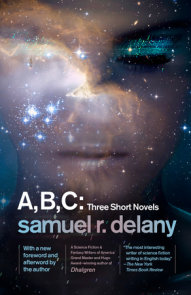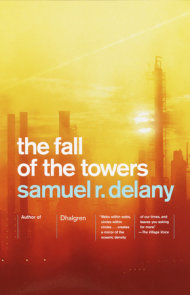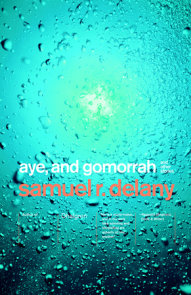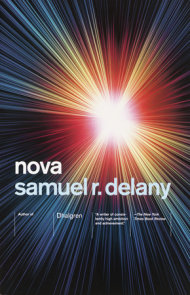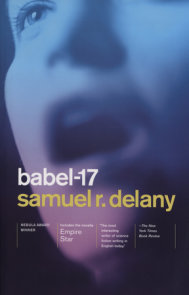
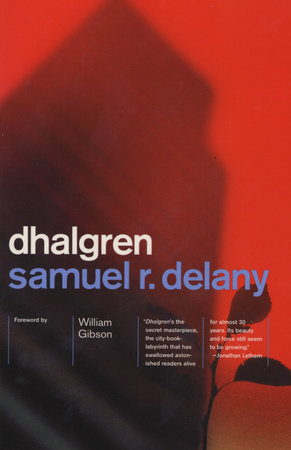
Buy from Other Retailers:
-
$23.00
May 15, 2001 | ISBN 9780375706684
Buy from Other Retailers:
Buy the Paperback:
About Dhalgren
In one of the most profound and bestselling science fiction novels of all time, Samuel R. Delany has produced a novel “to stand with the best American fiction of the 1970s” (Jonathan Lethem, bestselling author of Fortress of Solitude).
Bellona is a city at the dead center of the United States. Something has happened there…. The population has fled. Madmen and criminals wander the streets. Strange portents appear in the cloud-covered sky. Into this disaster zone comes a young man—poet, lover, and adventurer—known only as the Kid.
Tackling questions of race, gender, and sexuality, Dhalgren is a literary marvel and groundbreaking work of American magical realism.
About Samuel R. Delany
After his seventh novel, Empire Star (1966), Samuel R. Delany began publishing short fiction professionally with “The Star Pit.” It appeared in Worlds of Tomorrow and was turned into a popular two-hour radio play, broadcast annually over WBAI-FM for more than a decade. Two tales, “Aye,… More about Samuel R. Delany
Product Details
Category: Science Fiction
Paperback | $23.00Published by Vintage
May 15, 2001 | 816 Pages | 5-3/16 x 8 | ISBN 9780375706684
YOU MAY ALSO LIKE

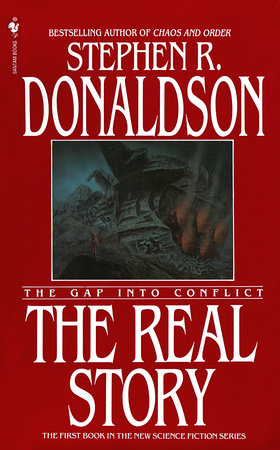
The Real Story

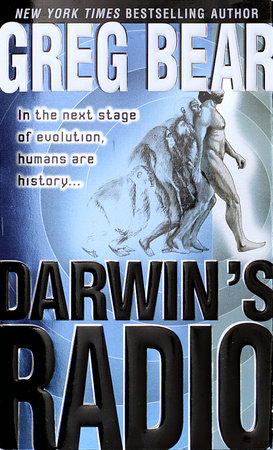
Darwin’s Radio

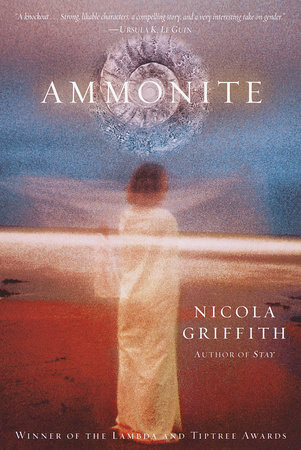
Ammonite

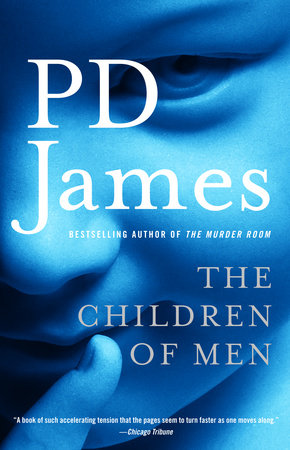
The Children of Men

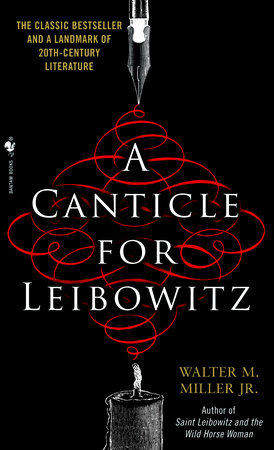
A Canticle for Leibowitz

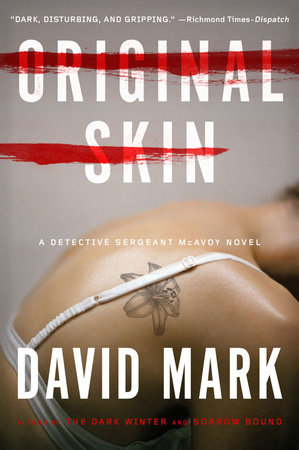
Original Skin

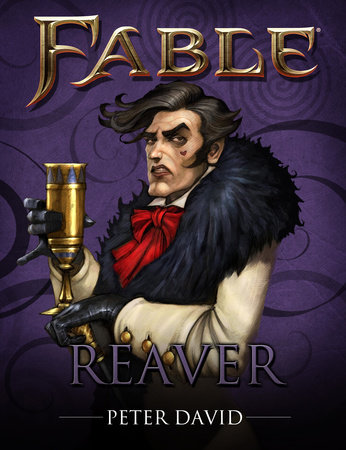
Fable: Reaver (Short Story)

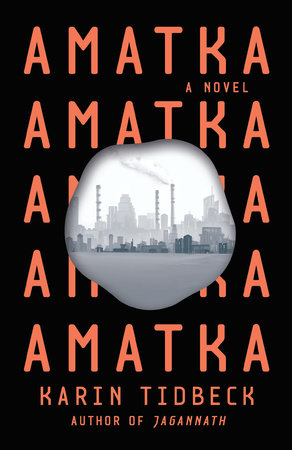
Amatka


Salvation

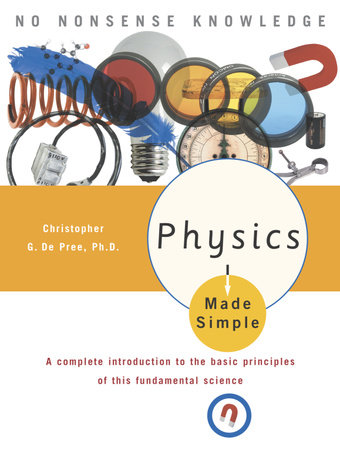
Physics Made Simple
Author Q&A
SAMUEL R. DELANY ON DHALGREN:
Q: How long did it take you to write Dhalgren?
A: Writing times are hard to pin down with fixed and fast dates: so much of the work is thinking. I don’t remember the name of the writer who, when asked how long it took to write one work or another, answered: All my life. My initial idea was to write a series of political novels–five in fact–in which factors of modern life I’d seen burgeoning throughout the previous decade–in the counter-culture of the sixties–eventually worked to bring down five societies that we actually have: consumer-industrial capitalism; another, a highly repressive collectivism; one was a classical parliamentary monarchy; another was a regular fascist dictatorship; still another was largely a corrupt bureaucracy that ran on bribes and payoffs. . . . (My picture of the original project was something like a set of Alfred Bester-style far-future adventures interpolated with lengthy passages of repartee a la George Bernard Shaw.)
As 1968 gave way to ’69, on New Years Eve I flew from New York to San Francisco, and in the course of the trip, I realized I wanted to do something more . . . well, I can only call it more poetic–and less intellectual. A week or so later, in San Francisco, when I began to write the text–or rather, to rewrite it, for I’d already drafted some desultory scenes back in New York–I realized that no, I was going to write one large book, not five small ones; and it was going to be much closer to the here and now than I had previously thought.
Usually I tell people Dhalgren took me just shy of five years. In my mind that time runs between the dates I put at the end of the book: January ’69 through September ’73. But the proposed five-volume Ur-Dhalgren predates that by as much as six months. Should that time be included? I was still fiddling with the book right up until the galleys went off from London, sometime around July or August of ’74. That would add another eleven months–almost a whole year.
Q: Many critics believe Dhalgren, with its ambitious scope and modernist style, transcends the boundaries of the sci-fi genre, and you yourself use the term "speculative fiction" to describe your writing. Do you find the label "science fiction writer" liberating, restricting, inaccurate? Or none of the above?
A: I used the term "speculative fiction" between 1968 and 1972. I haven’t since, nor do I find it a particularly necessary of useful term today.
Labels are neither confining nor liberating. They’re names; and names are useful. (Think about negotiating the world without them!) But now and again you have to sweep aside the prejudices and assumptions–the emotional and cultural baggage–that accrue to them.
During the four years I did use "speculative fiction," it meant something fairly specific. A joint term, it covered traditional science fiction, as most of us usually think of it, as well as classical fantasy–again as most of us think of it–and finally a small area of experimental fiction that used science fiction of fantastic imagery, but not in the way science fiction or fantasy usually do. Examples of this list included such stories as Pamela Zoline’s "The Heat Death of the Universe" and J.G. Ballard’s "condensed novels," eventually collected in his 1967 volume The Atrocity Exhibition. But speculative fiction was the "umbrella term" for all three. After ’72, however, through general use the meaning changed so that it no longer covered the S-F and Fantasy components and only indicated, rather, this last experimental material.
A few years after that, in the middle seventies, academics took it up and began to it for whatever they liked–usually the science fiction they happened to find particularly interesting to distinguish it from all the SF they didn’t personally care for. Well, to me, that was silly.
Today I make-do–and have made-do for more than twenty-five years, now–with "science fiction," "fantasy," and "experimental fiction" using "SF imagery." As far as I’m concerned, you can call Dhalgren any of these three, and I won’t be the least offended.
You could call it speculative fiction, if you liked–but, no, it’s not a term I’ve used since well before I finished writing the book, more than twenty-five years ago.
Q: Dhalgren details numerous sexually explicit situations. How were the book’s frank sexual passages received upon publication in 1975? How do you think people would react to those passages today if the book had just been published for the first time? In which ways have people’s attitudes towards sexuality, specifically bisexuality and gayness, changed since the book’s release?
A: I don’t think the sex in Dhalgren was that big a deal. A thriving pornographic paperback industry had a fairly large selection in pretty much every major urban bookstore, at the time–much larger, I suspect, than you’ll find today. When the book first appeared, there was more comment over the use of street language then the description of specific sex acts. Twenty-six years ago, every adventure movie and crime film wasn’t speckled with the language working men and women use–in real life.
Before 1968, the word "fuck" or "shit" in a book literally made it illegal. And a whole population of folk really felt that any reference to the perversions in a public document was immoral. Such things were so powerful that to name them was to spread them. Ignorance, they felt was the only protection. Between Stonewall (in 1969) and the advent of AIDS(in 1982), came a bakers’-dozen-year long period when gay men and women began to make various sides of their lives known to each other and to a range of American readers. Dhalgren was a small part of that. But I’m happy that played whatever part it did.
Q: Kidd in Dhalgren becomes a hero against his wishes. How do you define the role of a hero? How was that definition changed for you since the late sixties and early seventies?
A: I don’t think I ever have defined "the role of a hero." Kidd’s situation on several occasions takes the social form of a hero’s life, because other people decide he’s heroic. Kidd is generally pretty uncomfortable with those decisions, as I recall. He doesn’t feel he’s really done anything to warrant them.
The truly heroic things he does are small and help one person here, one person there–and are a matter of his fighting down one or another of his personal demons.
During the fifties and into the sixties, mainstream literary critical discourse spent a lot of time talking about heroes–and the lack of them in modern life. The purpose of poetry was assumed to be, for example (self-evident and unquestioned), the provision of images of heroes to the public, who could then, one assumes, model their own lives around them.
Well, one of the things Dhalgren wanted to do was laugh–and laugh pretty sardonically–at this inflated notion.
Q: What is the significance of Kidd having a beautiful body and ugly hands that he’s scared of? What are your hands like?
A: Kidd simply has hands like many men who have done lots of physical labor and who also bite their nails to extreme. Now, he thinks his hands are ugly–even hideous. But Lanya finds them beautiful. They’re big. They’re strong–and a good deal of Kidd’s history is written in their scars and calluses. I never saw him as really frightened of them–except once he looks at them very hard while on acid. That is a pretty universal syndrome, I suspect: Look at any part of your body (or anybody else’s, for that matter), fixed and unwavering–your face in a mirror, your thigh, your forearm–and you begin to see the skeleton beneath the skin, the potential for decay and death that underlies all living flesh and sinew. The presence of a hallucinogen in your system can make that quite spectacular–and particularly unsettling–experience. The judgement that the first woman Kidd meets makes–that someone with hands like his must be crude or cruel–is precisely the kind of judgment he is trying to get away from by going to Bellona.
You ask about my hands?
They’re the ordinary hands of a middleclass intellectual. I never did bite my nails, neither as a child nor as an adult. As hands go, they’re pretty unexceptional–rather dull, I’ve always thought.
Q: How did New York City, where you were born and raised, influence the creation of Dhalgren‘s Bellona?
A: Basically New York is my city. I was born here–in Harlem, where I lived the first fifteen years of my life. Its history is my history: Its structures and strictures of thought are the way I tend to think. In summer 1957, my family and I moved from central Harlem to the periphery of the neighborhood, into a co-op apartment in Morningside Gardens. We were a part of an exodus from Harlem that left the "inner city"–Harlem and the South Bronx–a devastated and abandoned ruin, where a few people managed to hang on, many living in absolutely sub-human conditions.
Nor was this only a New York City phenomenon.
Every major city in the country, between 1965 and 1985, developed a neighborhood–or neighborhoods (most of them black or Hispanic ghettoes)–that took on the same desolate state.
Why . . . ?
Often through their geographical relationship to the rest of the city, these areas should have been prime real estate.
What was it happening . . . ?
What was the reason . . . ?
You can find clear and hard-edged socioeconomic explanations for what was going on. But what it looked like to most city dwellers (even to those with an intellectual handle on economics) was a kind of malevolent, unexplainable magic, which took blocks and blocks of what should have been thriving real estate and turned them into ruins and abandoned shells.
Today, of course, as Bill Clinton sets up office space in Harlem–the most recent "event" in a series of reclamation’s that have been going on for a dozen years–this period of "inner city" devastation is going in reverse. But it’s particularly intriguing that Dhalgren is being reissued now: it was constructed almost wholly from images of those shattered and burned-out neighborhoods in New York and throughout the nation, from those decades between 1960 and 1995.
Q: In 1975 Delany fans had been waiting six years for another Delany novel to be published. What was it like to write Dhalgren, knowing the expectations that were building about your "big book"? How was the novel by fans of your other books?
A: I was twenty-five when my previous novel, Nova, was finished. (It came out when I was twenty-six.) In the time before I started Dhalgren, I had decided to give up writing altogether. For between eighteen months and two years, I threw myself into music, working with a now long-defunct rock group, Heavenly Breakfast. I wasn’t spending a lot of time with fans or at SF conventions–and indeed when I did, it was usually to show up, give a talk or do a panel, then go about on my business.
So I didn’t have much of a sense of fan expectation.
Looking back, more than twenty-five years later, I think some readers were just hoping for a colorful space opera–not a carefully observed book about life (whatever the fantastic elements that were introduced) in the (then-) present day.
I think some traditional science fiction readers wanted a story in which the non-normal situations could be explained away by science. I gave them a story in which the institutional support needed to put together any kind of scientific explanation at all is precisely what has broken down. Thus, the non-normal situations function in the book as they might in a novel of magic realism. Some of the early audience–the more traditional science fiction readers–weren’t prepared for a book in which the anxiety quotient connected with such images came from the fact that the scientific institutions that could have offered explanations for those non-normal situations were what had eroded from the landscape. You couldn’t call up the astronomy department of your local research university and say, "Hey, guys! What’s going on . . . ?"
ON HIS CAREER:
Q: As the writer most often identified as the first gay and African-American science fiction writer, do you feel obligated to address certain political issues in your writing? Do you consider yourslelf a role model?
A: No I don’t.
Like everyone else, I have my political and social opinions. I break them out when they’re relevant to the story or essay I’m writing. But I also do a lot of what D. H. Lawrence called "thinking against oneself." The characters who feel differently about the world from the way I do get the bulk of my sympathetic analysis–and that includes their political ideas.
As far as being the first gay and African-American SF writer?
Well no one like a tattle-tale: Nevertheless, Arthur C. Clark has been "out" since his novel, The Fountains of Paradise. And Murray Leinmster, author of the classic SF story "First Contact"(1945) was gay. Black writers George Shuyler, M.P. Sheil, Martin Delany (no relation, sadly), an otherwise unknown black writer named Johnson, and even W.E.B. DuBois wrote science fiction, or proto-science fiction, twenty-three, fifty-five, and even a hundred-three years before I did.
My very small claim to fame is that I am the first black SF writer who came up within the commercial science fiction field as it was formed in the late thirties.
From time to time, especially when I was young, my stories stemmed from politics–usually my political discontent with the way things were. (My early SF trilogy, The Fall of the Towers, is, I’m afraid, soggy with politics.) As I get older, however, politics becomes more and more peripheral.
Q: When did you decide to be a writer?
A: I made my first try at writing a novel when I was thirteen. At fifteen, I started one and finished it: It was just under three hundred pages. After seven more tries, the tenth one–which I wrote when I was nineteen–actually sold. It came out when I was twenty.
Q: When Dhalgren was first published, you were associated with a maverick group of sci-fi writers known as the New Wave. What was the New Wave and what became of them?
A: The New Wave was a group of writers, mostly English, such as J.G. Ballard, Brian Aldiss, and Christopher Priest–or, in a few cases, such as Thomas M. Disch, John Sladak, and Pamela Zoline, Americans living in England during the sixties–clustered around Michael Moorcock’s extraordinarily lively and energetic magazine New Worlds, whose editing the twenty-five-year-old Moorcock took over from Ted Carnell with the 1964 May/ June issue.
Through a couple passing visits to London in ’66 and ’67 I became friendly with these writers–and as much in sympathy with what they were doing–but I was never really a member of the group. First, I was still writing space operas while their concerns were largely with near-future SF that had pointed social relevance, as well as a romantic current that–as Moorcock has said on several occasions since–was what was most important to him in the work he was putting forth in the magazine. Second, save for six days in April of ’66 and two weeks over the Christmas–New Year holidays of ’66-’67, I lived in New York City–not London. One–and only one–of my stories appeared in New Worlds–a story which went on to win a Hugo Award: thus for some readers, my name was associated with that primary New Wave outlet. But, really, the story was an anomaly for New Worlds–as it was its award.
Q: You have written in so many genres–science fiction, of course, but also historical fiction and literary analysis. You’ve also written graphic novels, mainstream comic books, books of essays. What genres are you most comfortable writing in?
A: I’m particularly fond of the long–forty to a hundred-twenty pages. Works of mine I still enjoy include Heavenly Breakfast, the two essays that comprise Times Square Red, Times Square Blue, as well as "Wagner/ Artaud" and the other essays collected in my book Longer Views. (My Hart Crane essay, "Atlantis Rose. . ." is probably my favorite.) But, really, I don’t have a real genre preference. I think good writing is good writing, wherever you find it, in fiction or nonfiction.
Q: You’ve written more than twenty books. Do you have a favorite?
A: No, I don’t, really. Which is to say, the one I’m currently working on is pretty much always my favorite. And I’ve learned the hard way to never discuss that one–until it’s finished.
Q: How has sci-fi changed in the years since the publication of Dhalgren? Do you keep up with contemporary writers?
A: How has it changed? Well, for one thing, serious readers who appreciated the genre never called it "sci-fi." (Or "skiffy," which is, of course, the proper pronunciation!) That term was reserved for particularly brainless raygun and rocket-ship extravangeanzas. Serious readers said "science fiction" or "SF" and down their noses at anyone who said "sci-fi."
Now, of course, everybody says "sci-fi"–except, possibly, me.
Do I keep up, you want to know?
Nowhere near as much as I should!
Q: In the mid-seventies, you had a brief stint as a writer for Wonder Woman comic books. How did this come to pass?
A: One of the glories of the late-sixties comic book field was what were then called "relevant comics." In reaction to the freedom and daring of the then-burgeoning "underground comics," commercial comic books of the era began to take on far more mature themes and problems–social topics that had some punch: racism, child abuse, drugs, and what-have-you. The leading writer in this movement was Denny O’Neil and the leading artist, Neal Adams. It was an exciting moment in comics. The New York Times Magazine even devoted a Sunday cover article to them.
Well, five or six years before that, Wonder Woman’s writers had found themselves with the "Superman problem": Because she was so powerful, none of the villains could really offer any resistance, and Wonder Woman–nee Diana Prince–had been reduced, for several years, to Saving the Entire Earth from the Blue Meanies of Mars, or other equally mindless adventures. So, finally, the editors had done the only sane thing: Most of her super-powers had been taken away, and she was now just your ordinary black-belt karate expert and generally super-brave kick-ass heroine type–a sort of female Steven Seagal. She was still pretty damned heroic. Instead of the flag bra and blue bikini briefs, she wore a white karate gee with a black belt. Certainly it made it easier to come up with reasonable plots for her, and alone made it possible for the plots to have some relevance to the real world.
Once the new relevant comics came along, the editors decided an area they wanted to tackle was women’s problems. By that time Denny was editing Wonder Woman; he asked me to write a series of scripts for Wonder Woman that would touch on problems of actual women. (You might have thought, if they were really serious, they would have gotten a woman writer. But that, I suppose, was a bit too radical.) I came up with a six-issue story arc, each with a different villain: the first was a corrupt department store owner; the second was the head of a supermarket chain who tries to squash a women’s food co-operative. Another villain was a college advisor who really felt a woman’s place was in the home and who assumed if you were a bright woman, then something was probably wrong with you psychologically, and so forth. It worked up to a gang of male thugs trying to squash an abortion clinic staffed by women surgeons. And Wonder Woman was going to do battle with each of these and triumph.
Well, we only got through two issues–and the first was a matter of writing Wonder Woman out of the last adventure she was in and getting back into her Lower East Side neighborhood, which is where Diana lived by then anyway.
One day about six weeks after I had come on board, Gloria Steinem was being shown through the D.C. offices. Proudly they showed her the new Wonder Woman. Steinem hadn’t looked at a Wonder Woman comic, however, since she was twelve. Immediately she exclaimed: "What happenned to her costume? How come she isn’t deflecting bullets with her magic gold bracelets anymore and tying people up with her magic lasso?" Steinem didn’t get a chance to read the story of course. But she complained bitterly: "Don’t you realize how important the image of Wonder Woman was to young girls throughout the country?"
She had a point, I admit.
But, a day later, an edict came down from management to put Wonder Woman back in her American-flag falsies and blue bikini briefs and give her back all her super powers. Well, that’s what happened–and she went back to Saving the Entire World from the Blue Meanies of Mars. . . . There was no way I could work those in with the relatively realistic plot lines I had devised. So my stories were abandoned, and I was dumped as a writer–and Wonder Woman never did get a chance to fight for the rights of a women’s abortion clinic.
It’s a case of the world being over-determined–and over-determined in some destructive ways. But Steinem had no idea of the stories her chance comments were used to scuttle.
Q: In the last year, graphic novels (Jimmy Coorigan, David Boring, and others) have received a great deal of acclaim and attention. Tell us about your contribution to the graphic novel.
A: In 1978 I wrote the text for a hundred-four page SF novel, drawn by Howard Chaykin, called Empire. Save that some of the carets–the tales on the dialogue text–go to the wrong characters, I’m still fond of it’s color and liveliness. The term "graphic novel" didn’t exist then, so I suppose–technically–I’m one of the genre’s forerunners.
More recently I wrote an autobiographical "graphic novella," called Bread & Wine (1998), which artists Mia Wolff drew. It’s forty-six pages, and tells how I met my current partner, Dennis, in 1990, when he was homeless and living on New York streets. Mia did a wonderfully inventive and evocative job.
What do these books contribute to the genre? I wouldn’t even begin to speculate.
ON BOOKS AND WRITING:
Q: You have been teaching creative writing for three decades. What are the most difficult and rewarding parts of the job?
A: The hardest thing is imparting a sense of how difficult it is to be a writer–only partially because of the real hurdles within the profession per se, but even more so because most people who want to write–and often who want to write desperately–simply have no talent. Stupid people can never become writers. But intelligence–even extraordinary intelligence–is still no guarantee that one can write fiction–or even lively nonfiction. For that matter, neither is literacy, wide reading, a superb sense of grammar or of what William Strunk and E.B. White called "the elements of style"–nor is being a wonderful and inspiring teacher. These may make you a decent editor; but that’s all.
What’s really hard is breaking through the resistance almost all writing students maintain against the knowledge that writing thin, cluttered, or cliché sentences, scenes, or stories is not practice for writing good stories. It is only practice for writing more thin, cluttered, and cliché sentences and scenes.
What’s most rewarding is when a student with some talent finally comes to you and explains he or she doesn’t need a writing class any more; that he or she would do better writing on his or her own, and that, if they wanted to remain in school, they’d prefer to take a class in which they were learning tangible data about substantive topics. This doesn’t mean that the student hasn’t gotten anything out of your writing class. But teaching is always a self-destruct endeavor. The idea is to make the need for it vanish. And watching ignorance self-destruct is a joy.
Q: What books do you recommend to someone coming to the sci-fi genre for the first time?
A: Like poetry, like the literary novel, like drama, science fiction is a formal genre. What’s the first literary novel you give to some one who’s never read one before? The choice is of the same difficulty and complexity. There are as many types of science fiction as there are types of literary novels. Someone who loves Huckleberry Fin may be baffled by Moby-Dick. Someone who revels in Portrait of a Lady may be bored to tears by Sentimental Education–though all are great books.
Someone entranced by the wonderfully vivid present-day scene setting and characterization of Theodore Sturgeon may be completely lost in the far-future pyrotechnics of Alfred Bester, or vice-versa–though both are fine science fiction. Joanna Russ, Thomas M. Disch, the early work of Roger Zelazny–all are superb SF: indeed, all three are superb writers, period! But they are as different as Auden, Eliot, and Hart Crane. How do you go about choosing?
In practical terms, when I’m presented with the problem, I try to find out what a new reader is interested in. Then I recommend a well-written SF novel about that topic. (And let’s face it: If you have got someone who has never read any science fiction at all, then you got a fairly limited and–however well they may think of themselves–unsophisticated reader. I don’t particularly enjoy mysteries as a genre, but I’ve read my fifty or sixty, which include a good number of classics–Chandler, Hammet, Trent’s Last Case, Cornell Woolrich, a few Jim Thompsons, and The Murder of Roger Ackroyd . . . Reading something in every genre–including the odd bodice-buster romance–is simply a part of literacy.) There are science fiction tales about dance (Harness’s The Rose) and psychotherapy (Zelazny’s "He Who Shapes" and "Salvador") and ecology (Stewart’s "Earth Abides") and religion (Morrow’s Only Begotten Daughter) and history (Crowley’s Aegypt). One of the great myths about SF is that you’ve seen three episodes of Star Trek or Babylon-5–or perhaps read Neuromancer–somehow you know all there is to know about science fiction.
Q: What books do you go back and reread, over and over?
A: Lots of science fiction lends itself to rereading. Again, Russ, Disch, and Zelazny are all writers it’s easy–and rewarding–to read and reread. In my case, of course, I reread them because I often teach them. But I also love them.
The book I have probably read most times in my life, however, happens not to be SF. It’s Djuna Barne’s 1936 novel Nightwood. A poet, Marie Ponsot, gave me a hardcover copy when I was sixteen. (It didn’t appear in paperback from New Directions until a couple of years later.) The first time I read it, it made no sense to me whatsoever! But every few months I’d break it out again and give it another try. By the time I was twenty-five, I had read it cover to cover–at least three times. And I had begun to realize what an extraordinary novel and prose object it was.
Since age thirty-five, I’ve probably read Nightwood an average of once a year. It’s written in three distinct styles: the opening movement’s glistening indirect reportage on Felix’s beleaguered Jewish father and German gentile mother; the lapidary narrative transfixing Jenny, Nora, and Robin to Barnes’s page; and the associative leaps of Dr. O’Conner’s hallucinatory American night-speech. Each is impelled by a different inner machinery, though all belong to the novel’s extraordinary conceptual engine. A few years back scholar Cheryl J. Plum put out a critical edition with the Dalkey Archive that untangles the editorial work T.S. Eliot did on the book–and restores as well the cuts he made–and also chronicles in detail Emily Holmes Coleman’s considerable critical input. It’s three times as fascinating as watching Pound cut down the Wasteland to size.
One of my more humbling experiences was learning of a woman on the West Coast who has read Dhalgren once a year for more than twenty years now. Since I know how rich a book has to be to sustain attention, I’m just dazzled someone could find–for whatever reasons–something I’d written that interesting.
(New York City, March 2001)
21 Books You’ve Been Meaning to Read
Visit other sites in the Penguin Random House Network
Just for joining you’ll get personalized recommendations on your dashboard daily and features only for members.
Find Out More Join Now Sign InAccount Overview Recommendations Orders Account Details Email Preferences Bookshelf






